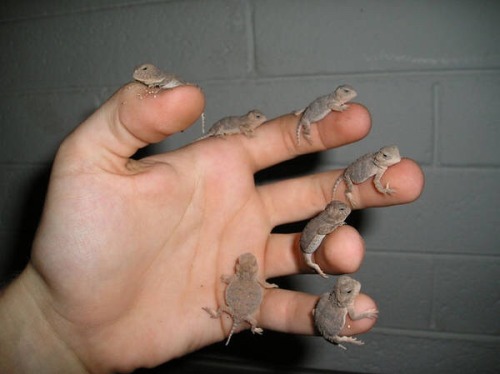731 posts
This Is Amazing

this is amazing
-
 haruhixtamaki reblogged this · 2 years ago
haruhixtamaki reblogged this · 2 years ago -
 potc4life liked this · 3 years ago
potc4life liked this · 3 years ago -
 a-dream-journalist liked this · 3 years ago
a-dream-journalist liked this · 3 years ago -
 of-wolves-dragons-and-leopards liked this · 5 years ago
of-wolves-dragons-and-leopards liked this · 5 years ago -
 oh-just-me liked this · 6 years ago
oh-just-me liked this · 6 years ago -
 kaydreams25 liked this · 6 years ago
kaydreams25 liked this · 6 years ago -
 unikelle liked this · 7 years ago
unikelle liked this · 7 years ago -
 pandaphotowriter liked this · 7 years ago
pandaphotowriter liked this · 7 years ago -
 rabbitrat09 liked this · 7 years ago
rabbitrat09 liked this · 7 years ago -
 dogofpizza reblogged this · 7 years ago
dogofpizza reblogged this · 7 years ago -
 bluehoodedredbird liked this · 7 years ago
bluehoodedredbird liked this · 7 years ago -
 queenofthefudgemuffinz-blog liked this · 7 years ago
queenofthefudgemuffinz-blog liked this · 7 years ago -
 uiriamu58 liked this · 8 years ago
uiriamu58 liked this · 8 years ago -
 pancakedoesart liked this · 8 years ago
pancakedoesart liked this · 8 years ago -
 merlehighchurch liked this · 8 years ago
merlehighchurch liked this · 8 years ago -
 raysraves reblogged this · 8 years ago
raysraves reblogged this · 8 years ago -
 raysraves liked this · 8 years ago
raysraves liked this · 8 years ago -
 holywritingpromptsbatbruh reblogged this · 8 years ago
holywritingpromptsbatbruh reblogged this · 8 years ago -
 holywritingpromptsbatbruh liked this · 8 years ago
holywritingpromptsbatbruh liked this · 8 years ago -
 hakusaien-blog liked this · 8 years ago
hakusaien-blog liked this · 8 years ago -
 mcsiggy liked this · 8 years ago
mcsiggy liked this · 8 years ago -
 superspecialref reblogged this · 8 years ago
superspecialref reblogged this · 8 years ago -
 fvriva liked this · 8 years ago
fvriva liked this · 8 years ago -
 krystabella liked this · 8 years ago
krystabella liked this · 8 years ago -
 nopeitsnotmeworld reblogged this · 8 years ago
nopeitsnotmeworld reblogged this · 8 years ago -
 9logic reblogged this · 8 years ago
9logic reblogged this · 8 years ago -
 9logic liked this · 8 years ago
9logic liked this · 8 years ago -
 harrygodzilla reblogged this · 8 years ago
harrygodzilla reblogged this · 8 years ago -
 harrygodzilla liked this · 8 years ago
harrygodzilla liked this · 8 years ago -
 arioodle-spam liked this · 8 years ago
arioodle-spam liked this · 8 years ago -
 alittleluckycharm liked this · 8 years ago
alittleluckycharm liked this · 8 years ago -
 edelweiss-and-mushrooms liked this · 8 years ago
edelweiss-and-mushrooms liked this · 8 years ago -
 kaleidoscopeforest liked this · 8 years ago
kaleidoscopeforest liked this · 8 years ago -
 havenskid19 liked this · 8 years ago
havenskid19 liked this · 8 years ago
More Posts from Pinkpearlswirl
My 3 Unfortunately-Secret Programs for Illustrators
There are a few programs I use on an almost daily basis as an artist and illustrator which I find invaluable, but that seem to be unfortunately more secret than they deserve to be. Which is too bad, because they solve a lot of small workflow problems that I think a number of people would find useful!
I’ll keep this list limited to my big three, but it is organized in order of usefulness. (And incidentally of compatibility, as the latter two are Windows-only. Sorry! Please do still check out PureRef though, Mac users.)
1. PureRef
PureRef is a program specifically designed to make it easier to view, sort, and work with your references. I actually put off downloading it initially because it seemed redundant– couldn’t I just paste the refs into my PSD files? Indeed, the only real barrier to working with PureRef is that learning the keyboard shortcuts and the clicks to move around the program takes a little while. But getting over that hump is well worth it, because it has some distinct advantages over trying to organize your refs in your actual art program.

Firstly, you’re no longer bogging down your actual PSD file with extra layers, nor having to fight with said layers at all– PureRef has no layer panel, so you never have to scramble to grab the right one. All images you paste into the program retain their original resolution data, so you can resize, rotate, crop, etc as needed without distortion. If you find yourself needing to adjust the values, color, etc of a ref image, you can just copy paste it into Photoshop, make your adjustments, and copy paste it back into PureRef.
The other great advantage is that you can toggle the program as ‘Stay On Top’ and keep it above Photoshop (or whatever else)– which was always a problem when trying to make a reference collage in a separate PSD file. I find that I just don’t look at my references as much as I should when they are on a second monitor, and this solves that problem.

I’ve used it religiously for about a year now, creating a new PureRef file for every illustration I do, as well as a few for specific characters, cultures, or settings in personal projects. As you can see in the example above, I like to sort my images into little clusters or ‘islands’ of specific content, so that I can easily scroll out to see the entire reference map, then zoom in to the relevant cluster easily.
There is one big tip I would suggest for using this program, if you have the harddrive space: As soon as you get it, turn on the ‘Embed local images in save file’ option. This will make your PureRef files bigger, but you’ll never have to deal with a ‘broken link’ if you move around the source files you originally dragged in.
2. Work Timer
This is such a simple little app that it doesn’t have a very formal name, though I think of it as ‘Work’ or ‘Work Work’ (for some reason.) It’s a timer that counts when your cursor is active in any (of up to 3) program you set it to count for, and stops counting when you change programs or idle. No starting, pausing, stopping, or forgetting to do any of those three things.

I use this one to accurately track my hours, both to inform myself and for commissions or other client work. At the end of a work session, I take the hours counted and add them to the hours I’ve already spent on that image in a spreadsheet.
I have it set to count my three art programs (Photoshop, Painter, and Manga Studio), so based on the settings I use, it doesn’t count time that I spend doing relevant work in my browser (such as looking up an email to double check character descriptions or ref hunting), so to counter that, I set the ‘Timeout’ option in it’s menu to 360. This means it will count to 360 seconds of cursor inactivity before it considers me idle and stops counting. Since it instantly stops counting if you switch to ‘non-work’ a program, I figure this extra time just about cancels out relevant time that it ignores in ‘non-work’ programs by counting an extra minute or so when I walk away from the computer to grab some water or what-have-you.
3. Carapace
I use Carapace the least of these three, since my work doesn’t often have a need for creating perspective lines. But when there is architecture involved in something, this proves invaluable in simplifying that process.

Carapace lets you copy paste an image into it, and then drop in vanishing points and move them around to create perspective lines. (Though you’ll want to scale down your full res drawing or painting a bit to avoid lagging the program.) Like with PureRef, fighting the shortcuts is the worst part of it, though for myself it’s more of an issue in this program because I don’t use it often enough to remember them. Still, it gets the job done, and it’s easy to adjust the points to feel things out until you get them ‘right’. Then you just copy and paste the grid back into your art program and you’ve got that information to use as need be on its own layer.
Of course, using Carapace isn’t a replacement for actually knowing how perspective works– you still have to have a sense of how far apart the vanishing points should be placed to keep things feeling believable. But it sure does save you a lot of trouble once you do have that knowledge.

So, there are my big three recommendations for programs to help your art workflow. I hope people find them useful– if you do, please share so that they climb a little higher out of their unwarranted obscurity! And if you’ve got a favorite tool like this that I didn’t cover, feel free to share it in the comments. I know I’m curious to see what else is out there, too. Also, if Mac users have any suggestions for programs that fill similar functions, feel free to share there as well!
My Website • Store • Commissions • Instagram • Twitter • Deviantart
He got destroyed! Hehe. Very appropriate.

Obama at his first State of the Union Address and his last one
My experience with digital art
MERGE THE LAYER KRONK
W R O N G L A Y E R

